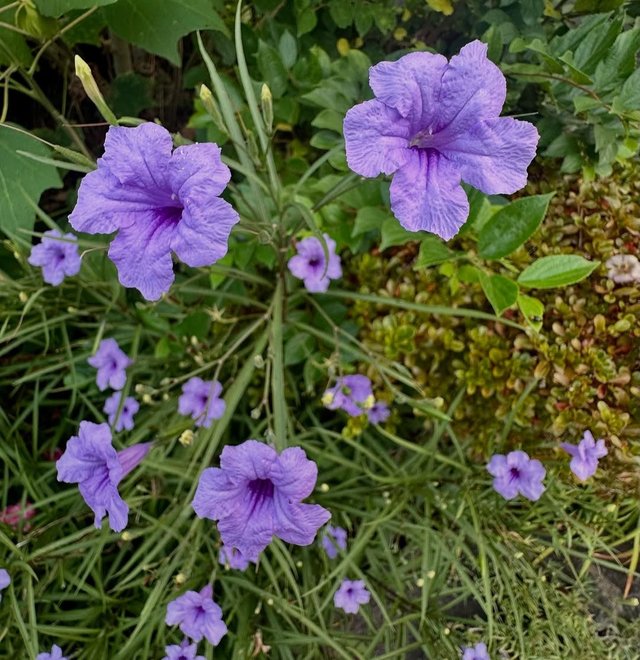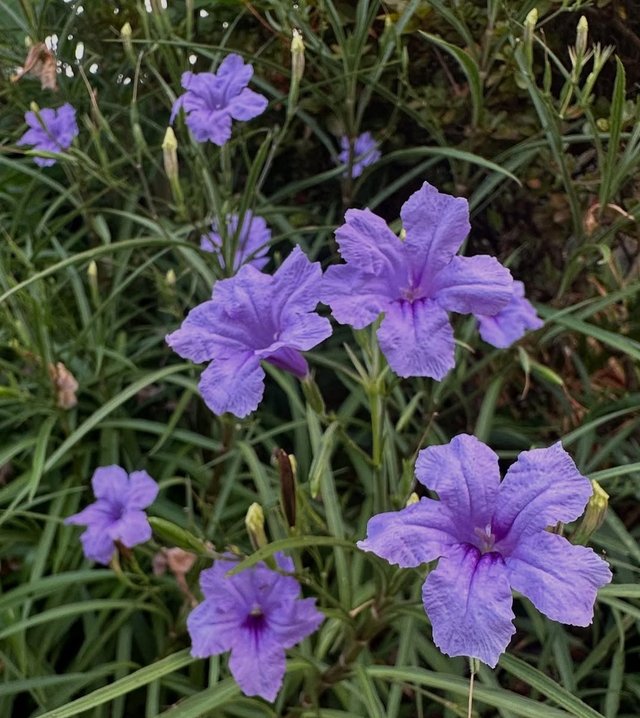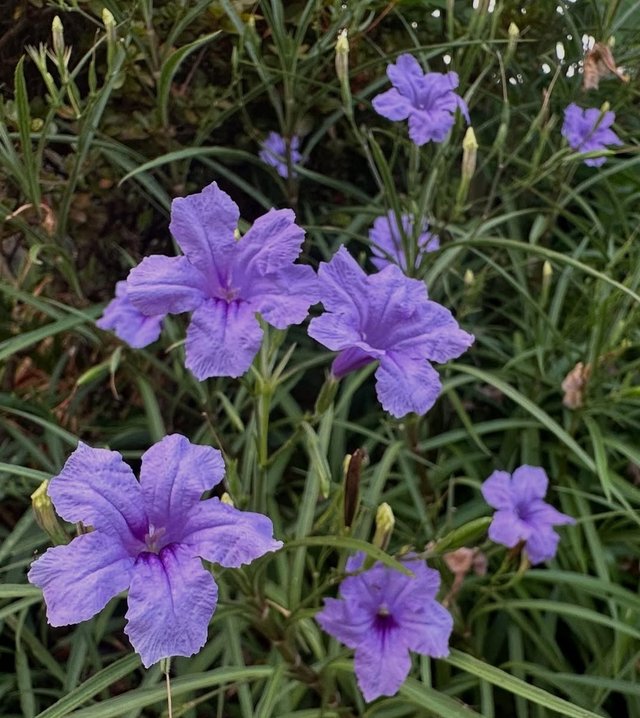Ruellia Simplex Flower
Ruellia simplex, often known as Mexican petunia, Mexican bluebell, or Britton’s wild petunia, is a striking and versatile flowering plant that has found its place in gardens across many parts of the world. Belonging to the family Acanthaceae, it is native to Mexico, the Caribbean, and South America, but today it has spread widely as both an ornamental plant and, in some regions, a naturalized or even invasive species. With its beautiful violet-blue blooms, hardy nature, and ability to thrive in diverse conditions, Ruellia simplex has become a plant of both admiration and caution in horticultural and ecological discussions.
Appearance and Characteristics
Ruellia simplex is a perennial plant that typically grows between 30 cm and 90 cm tall, though in ideal conditions it can grow even taller. It has narrow, lance-shaped leaves with a dark green color and a slightly glossy surface, creating a lush backdrop for its blossoms. The most striking feature of the plant is its flowers—delicate, trumpet-shaped blooms about 5–7 cm wide that appear in shades of vibrant violet to blue, occasionally leaning toward lavender tones. These flowers usually open in the morning and fade by late afternoon, but new ones bloom daily, creating a continual show of color throughout much of the year in warm climates.
One unique trait of Ruellia simplex is its ability to spread quickly. It reproduces not only by seed but also through underground rhizomes, allowing it to form dense colonies. This makes it an excellent choice for ground cover in gardens but also a potential concern in natural ecosystems where it can outcompete native flora.
Growing Conditions and Care
One of the reasons Ruellia simplex is so popular among gardeners is its resilience. It thrives in a wide range of soil types, from sandy and loamy soils to heavy clay, as long as the ground is not too dry for prolonged periods. It is equally at home in full sun or partial shade, though flowering is typically more abundant in sunny spots.
The plant has remarkable tolerance for both drought and flooding, making it a reliable choice in regions with variable weather conditions. Once established, it requires minimal care—just occasional pruning to manage its spread and encourage bushier growth. Gardeners often use it for borders, mass plantings, or along water edges since it can tolerate wet soil.
Ecological Impact
While admired for its beauty and hardiness, Ruellia simplex has earned a reputation as an invasive species in certain regions, particularly in the southeastern United States. Its aggressive spreading habit enables it to invade wetlands, disturbed areas, and natural habitats, where it competes with native plants for space and resources. Because of this, some states list it as a regulated plant, recommending the use of sterile cultivars that do not produce viable seeds. These cultivars allow gardeners to enjoy the beauty of Mexican petunia without the ecological risks associated with its wild form.





Wow, @mdhafijulislam00, what a fantastic exploration of Ruellia simplex! Your post is so well-written and informative – I learned so much about this plant. The details on its appearance, growing conditions, and even its ecological impact are all fascinating. The photos you've included are simply stunning. The vibrant violet-blue hues of the blooms are beautifully captured and really bring the plant to life!
It's great that you highlighted both the benefits and potential drawbacks of this species. Have you cultivated this plant yourself, and have you had problems with it spreading? I'm curious to know how it behaves in your local environment.
Keep up the amazing work! I'm sure others in the Steemit community would love to hear more about your experiences or insights on managing this beautiful, yet potentially invasive, plant. Let's get a discussion going!